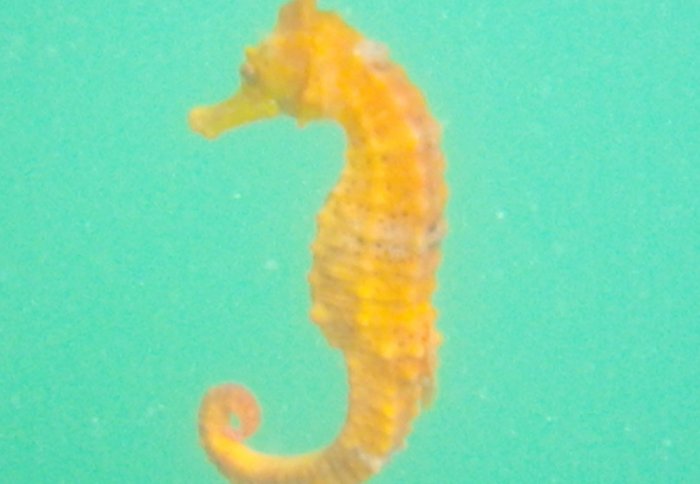
West African seahorse

Researchers have released the first-ever footage of a little-known seahorse species, video captured off the coast of Senegal
Researchers have released the first-ever footage of a little-known seahorse species.
The video shows a West African seahorse (Hippocampus algiricus) being caught and released by local fishers off the coast of Senegal. The animal swims away, unharmed.
Footage was captured by researcher Kate West during an investigation into West Africa's burgeoning seahorse trade, The study is being carried out by scientists at Zoological Society of London's (ZSL) Project Seahorse, Imperial College London, and the University of British Columbia (UBC).
Ms West, who is studying an MSc in Conservation Science in Imperial’s Department of Life Sciences, was travelling on a local Senegalese fishing boat filming seahorses in the wild, and speaking to local people about their interactions with these unusual species of fish.
"The West African seahorse is one of two native species caught locally for trade around the world," she said. "But it's shocking that so little is known about this fish when more than a tonne of them are officially exported each year."
Research to date indicates that trade in West African seahorses has risen dramatically over the past few years, with exports of about 600,000 annually. They are used primarily in traditional Chinese medicine.
"In recent years, the West African seahorse has become highly sought after, along with many other seahorse species. Our fieldwork — the first ever study of this species — is revealing the fishing and trade pressures they face, and how populations can be sustained," said research supervisor Dr Amanda Vincent, Associate Professor at UBC and Director of Project Seahorse.
Dr Vincent first uncovered the thriving global seahorse trade in the mid-1990s and co-founded Project Seahorse in response. The team’s efforts resulted in the Convention on Trade in Endangered Species (CITES) adopting international trade controls for seahorses in 2002.
"Poor diving conditions and underwater visibility off the West African coast make it more difficult to conduct field studies than in other areas where seahorses are found," explained Ms West. "No research has been done on this species, and nothing is known about its habitat, life cycle, or population status, which is why this study is so vital for their conservation."
"Our findings will be shared with the Senegalese and other governments so they can meet their CITES obligations to ensure that the seahorse trade is sustainable," adds Chris Ransom, West and North Africa Programme Manager at ZSL. "Together we will help seahorse populations to thrive."
Article text (excluding photos or graphics) available under an Attribution-NonCommercial-ShareAlike Creative Commons license.
Photos and graphics subject to third party copyright used with permission or © Imperial College London.
Reporter
Simon Levey
The Grantham Institute for Climate Change

Contact details
Tel: +44 (0)20 7594 5650
Email: s.levey@imperial.ac.uk
Show all stories by this author




Leave a comment
Your comment may be published, displaying your name as you provide it, unless you request otherwise. Your contact details will never be published.